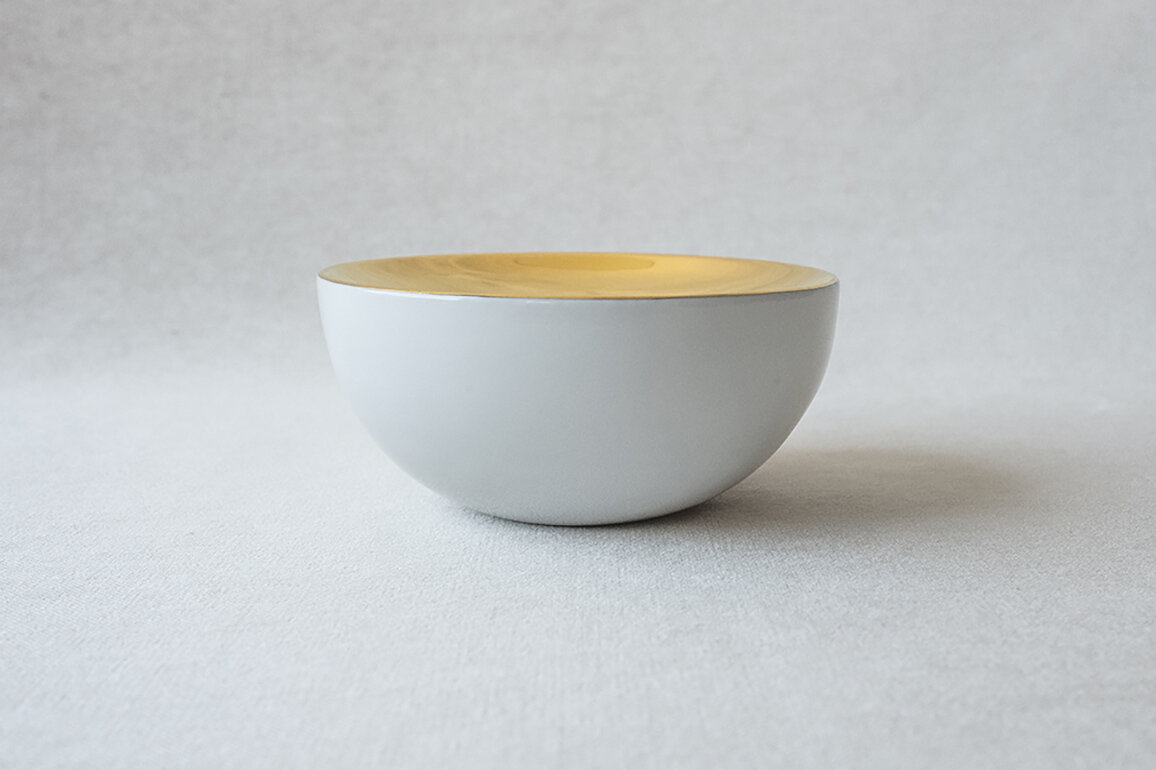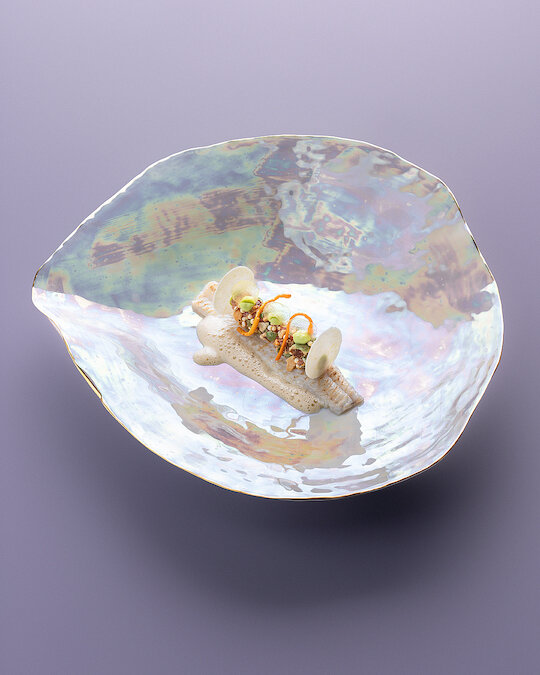Gastrophysics: why a red plate makes you feel fuller and angular shapes are bitter
by sarah-linda
“We are hardwired to feel close to those with whom we share food, and to define as alien those who eat different from us”.
Carolyn Steel
No wonder there is such a thing as gastrodiplomacy.
I recently read the book Gastrophysics by Charles Spence, and I have to say it’s mindblowing, eye opening, weird. Humans are very much influenced by their surroundings, expectations and memories when it comes to tasting. Contrary to what you might think, taste is really not an objective experience – nor are your choices, really.
Here are some of my takeaways from the book!
Sight
The shape of our cutlery, tableware and even furniture, influence what we taste: round shapes are associated with sweet and creamy, while angular, sharp shapes create a more bitter, sour and/or sparkling experience. There is an example of a well known chocolate brand, who changed the shape of their bar from angular to more rounded. Regular customers started to complain: they found the bar suddenly too sweet. Isn’t that crazy? The brand had altered nothing in the ingredients and composition of the chocolate – only the chape had changed.
Colours too can change our taste perception. Red/pink colours make it taste sweeter, while blue makes it saltier. Apparently serving food on a red plate also makes people feel fuller and eat less than with any other colour. Good to know?
Food in motion (think melting chocolate or threading cheese) is more appealing and looks fresher to us. This is because food in motion is often higher in calories, and we are obviously wired to be attracted to foods containing lots of calories.
Talking about melting chocolate, did you know that the term gastro-porn was first used in 1977 by Alexander Cockburn in the New-York review of Books?
“Now it cannot escape the attention that there are curious parallels between manuals on sexual techniques and manuals on the preparation of food; the same studious emphasis on leisurely technique, the same apostrophes to the ultimate, heavenly delights. True gastro-porn heightens the excitement ans also the sense of the unattainable by proffering colored photographes of various completed recipes.”
Pure foodporn.
Smell
Smell plays a much bigger part in our tasting experience than we would think. We credit our taste buds but really we should thank our nose. Remember the time you had a cold and your nose was blocked? Your taste was drastically decreased as well.
This is why smells in the surrounding really influence the actual taste. Especially if you don’t know where the smell is coming from, it’s easy to associate it with the food in front of you. So it’s probably best not to have any strong smells in the dining room (scented candles, cleaning products, smoke..), other than the smells coming out of the kitchen.
Sound
The sound of what we eat is very important to our evaluation of freshness. We’re always looking for that crunch, synonym of freshness. Research showed that people eating potato chips with an enhanced crunch sound (only the sound in headphones, not the actual crunch of the chips), evaluated them as fresher and better tasting.
The background music will have an impact on your experience as well. Music you like will make your food taste sweeter, while music you don’t like will enhance bitterness.
But in a very loud environment where you can’t even hear yourself talk, you’ll have a hard time tasting what you’re eating.
This is a funny one: the music in a wine store influences the choices people make. When there is French, German or Italian music in the background for instance, people will more likely buy wine from that respective country – without even being consciously aware of that music, even less so of the infuence that music had on them.
Touch
The first taste is with your hands: the feeling and weight of the cutlery you’re holding has a big impact as well on the taste. When people use heavy cutlery, they rate their food as better, of higher quality and more artistic. This is without actually noticing the cutlery, just the ovarall experience.
Heavy tableware, like a heavy stoneware bowl, will give you a more filling feeling.
Funny thing about bowls: research has found that when people are served food in a bowl, they often take a sniff, put their nose over the bowl and smell. People don’t do that with a plate. There is just something so comforting about a warm, heavy bowl of food.
Packaged products also receive a higher rating when their packaging is heavier. Think about yoghurt, drinks in a can, chocolate boxes... People would taste the same product in the same packaging with just a difference in weight, and they would rate the heavy one as better.
Texture plays an important part as well, both visually and physically. Ginger cookies served on a plate with a rough texture are rated as more spicy than on a smooth plate.
Surroundings
Interior design should be taken seriously when opening a restaurant or bar. All those decorations, thematic interiors, colour themes… they all play a role in our taste experience. For example, if an Italian restaurant is decorated in an Italian theme, people will rate the food as more authentic, more ethnic.
For a research project, 3 rooms where designed differently: one was decorated in a green, grassy theme, one with an old fashioned wooden interior, and one had a pink and red, soft interior. People were then tasting the same whiskey in each room. You guessed it, they rated the whiskey in the green room as grassy, in the red room as sweeter and in the wooden room as more woody.
A few other funny facts:
Playing classical music in the background results in people spending 10% more on average.
The faster the music, the more rapidly people eat.
The slower the music, the more we spend.
When music in a bar gets 22% louder, people will drink 26% faster.
People will enjoy the experience more, if the music “matches” the food.
Apparently people are more attracted to round furniture (good one for Helene Darroze at The Connaught): it feels more friendly and calming.
But now, do you know why everyone is always ordering tomato juice while flying? When surrounded by loud noise, sweet and sometimes saltiness are suppressed, while umami is actually enhanced. Tomato juice being the most umami drink you can get in a plane.. that’s what we do.
Memory
We might think we actually remember what we had for dinner somewhere, but mostly we don’t. We usually remember the starter and the dessert, and whatever was the highest high, the lowest low or the most unusual. The rest, we forget. We’re quite good a filling in with associations we have with our feelings about the experience, but rarely remember the actual food and tastes.
What to do with all this? If all these aspects influence us while we don’t even know it, can we do something about it? Maybe not as consumer, but as a hospitality professional certainly! And I’m most definitely going to use this knowlegde at my next dinner party.



